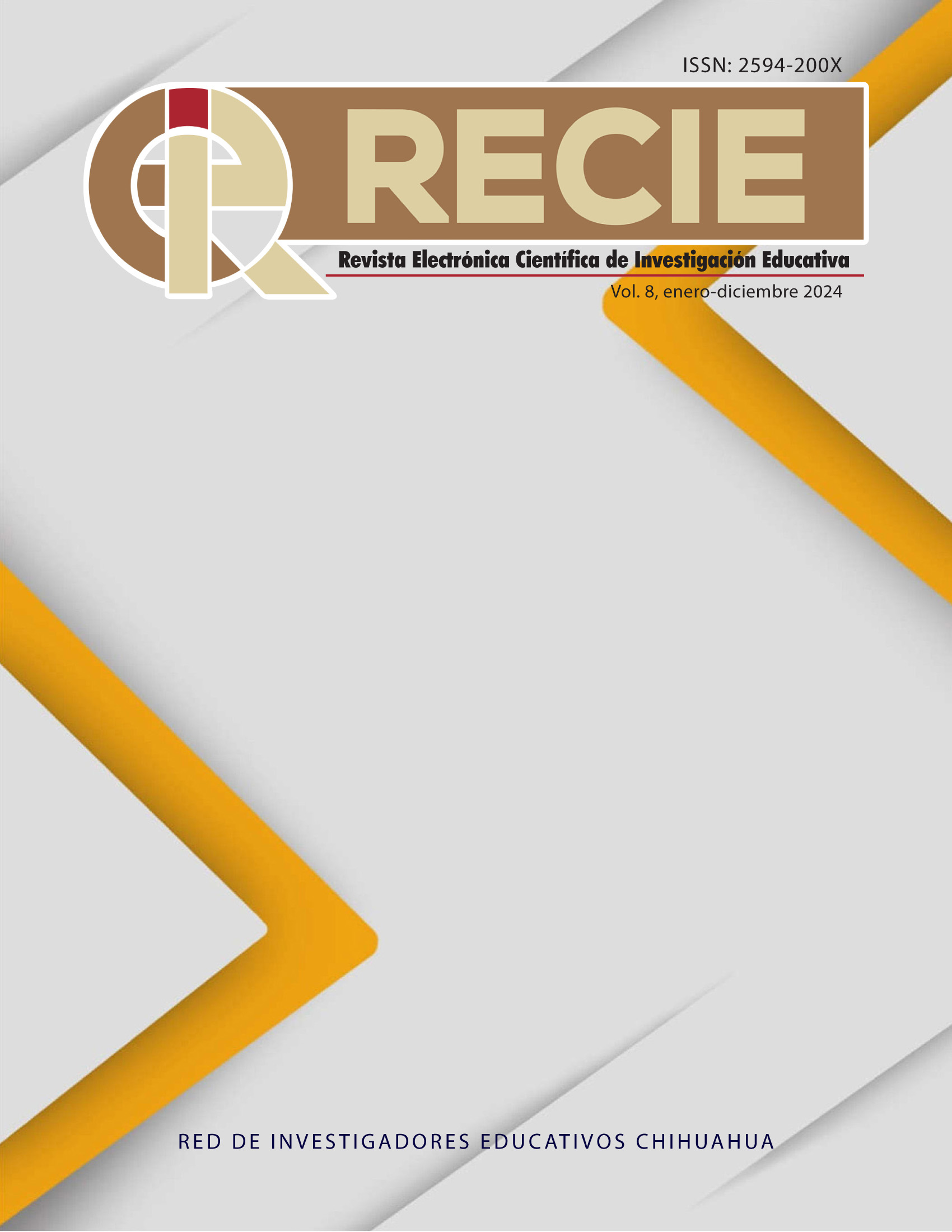The relevance of promoting self-regulated learning in secondary school adolescents with learning difficulties attending a tutoring program
Published 2024-12-31
Keywords
- Adolescents,
- self-regulated learning,
- secondary education,
- learning difficulties,
- tutoring
- Adolescentes,
- aprendizaje autorregulado,
- educación secundaria,
- problemas de aprendizaje,
- tutoría
How to Cite
Copyright (c) 2024

This work is licensed under a Creative Commons Attribution-NonCommercial 4.0 International License.
Abstract
The objective of this study is to explain the importance of self-regulated learning strategies in fostering more autonomous learners by describing tutoring work with adolescents aged 11 to 14 who exhibit characteristics of learning difficulties. This research follows a qualitative case study design, employing document analysis, participant observation, and personal and group logs. The findings indicate that the way students approach academic tasks is influenced by the activity of pre-service tutors, who, in turn, develop scaffolding strategies as part of their professional practice, thereby fostering self-regulated learning. In conclusion, tutoring sessions focused on addressing academic challenges enable students with various learning difficulties to develop autonomy in their learning, expanding their self-regulation strategies.
References
- Aldana, M., y Flores, R. (s.f.). Promoviendo la motivación en estudiantes con problemas de aprendizaje, una estrategia de solución de problemas. https://tutoriaaprendizajeadolescentes.org/innovacion/estudiantes-problemas
- Castro, E., Landa, P., y Vega, C. (2006). Aprendizaje autorregulado: una revisión conceptual. Revista Electrónica de Psicología Iztacala, 9(2), 1-21. https://www.iztacala.unam.mx/carreras/psicologia/psiclin/vol9num2/vol9n2art1.pdf
- Dermitzaki, I., y Kallia, E. (2021). The role of parents and teachers in fostering children’s self-regulated learning skills. En D. Moraitou y P. Metallidou (eds.), Trends and prospects in metacognition research across the life span: A tribute to Anastasia Efklides (pp. 185-207). Springer Nature. https://doi.org/10.1007/978-3-030-51673-4_9
- Flick, U. (2015). El diseño de investigación cualitativa. Morata.
- Flores, R. (2006). El Programa Alcanzando el Éxito en Secundaria: ¿qué hemos aprendido? En R. Flores y S. Macotela, Problemas de aprendizaje en la adolescencia: experiencias en el Programa Alcanzando el Éxito en Secundaria (pp. 15-29). UNAM.
- Flores-Macías, R., y Guzmán-Cedillo, Y. I. (2022). MAPLS: Modelo de aprendizaje profesional en línea y situado. En L. Bontempo y Y. Guzmán-Cedillo (coords.), Experiencias educativas para el aprendizaje autónomo en aulas virtuales y presenciales (pp. 111-129). UNAM. https://librosoa.unam.mx/handle/123456789/3633
- Gibbs, G. (2013). El análisis de datos cualitativos en investigación cualitativa. Morata.
- González-Juárez, G. (2004). La participación del tutor en el establecimiento de metas durante la realización de tareas escolares en alumnos de secundaria con problemas de aprendizaje [Tesis de maestría, UNAM]. Repositorio TESIUNAM. http://132.248.9.195/ppt2004/0333934/Index.html
- Graham, S., Collins, A., y Ciullo, S. (2024). Evidence-based recommendations for teaching writing. Education 3-13, 52(7), 979-992. https://doi.org/10.1080/03004279.2024.2357893
- Hock, M. F., Pulvers, K. A., Deshler, D. D., y Schumaker, J. B. (2001). The effects of an after-school tutoring program on the academic performance of at-risk students and students with LD. Remedial and Special Education, 22(3), 172-186. https://doi.org/10.1177/074193250102200305
- Jitendra, A. K., Lein, A. E., Im, S., Alghamdi, A. A., Hefte, S. B., y Mouanoutoua, J. (2018). Mathematical interventions for secondary students with learning disabilities and mathematics difficulties: A meta-analysis. Learning Disability Quarterly, 41(2), 185-196. https://doi.org/10.1177/0731948717737798
- Kampylafka, C., Polychroni, F., y Antoniou, A.-S. (2023). Primary school students with reading comprehension difficulties and students with learning disabilities: Exploring their goal orientations, classroom goal structures, and self-regulated learning strategies. Behavioral Sciences, 13(2), 78. https://doi.org/10.3390/bs13020078
- King, R., y Ganotice, F. (2013). The social underpinnings of motivation and achievement: Investigating the role of parents, teachers, and peers on academic outcomes. The Asia-Pacific Education Researcher, 23, 745-756. https://doi.org/10.1007/s40299-013-0148-z
- Macotela, S. (2006). La definición de los problemas de aprendizaje: el debate contemporáneo. En R. Flores y S. Macotela, Problemas de aprendizaje en la adolescencia: experiencias en el Programa Alcanzando el Éxito en Secundaria (pp. 39-52). UNAM.
- Merriam, S. (2009). Qualitative research: A guide to design and implementation. Jossey-Bass.
- National Center for Learning Disabilities (2024). Understand the issues. Understanding specific learning disabilities. https://ncld.org/join-the-movement/understand-the-issues/
- Osés, R. M., Aguayo, J. C., Duarte, E., y Manuel, J. I. (2014). Autorregulación y los efectos de una intervención educativa en secundaria. Revista Electrónica de Investigación Educativa, 16(1), 43-55. https://www.redalyc.org/articulo.oa?id=15530561004
- Panadero, E., y Alonso-Tapia, J. (2014) ¿Cómo autorregulan nuestros alumnos? Revisión del modelo cíclico de Zimmerman. Anales de Psicología, 30(2), 450-462. http://dx.doi.org/10.6018/analesps.30.2.167221
- Ray, A., Graham, S., y Liu, X. (2019). Effects of SRSD college entrance essay exam instruction for high school students with disabilities or at-risk for writing difficulties. Reading and Writing, 32, 1507-1529. https://doi.org/10.1007/s11145-018-9900-3
- Rodríguez-Galicia, M. A., y Guzmán-Cedillo, Y. I. (2023). La formación profesional de tutores en la modalidad remota. Enseñanza e Investigación en Psicología, 5, 1-12. https://doi.org/10.62364/cneip.5.2023.171
- Sáez-Delgado, F., Mella-Norambuena, J., López-Angulo, Y., y León-Ron, V. (2021). Escalas para medir las fases de autorregulación del aprendizaje en estudiantes de secundaria. Información Tecnológica, 32(2), 41-50. https://dx.doi.org/10.4067/S0718-07642021000200041
- Simons, H. (2011). El estudio de caso: teoría y práctica. Morata.
- Torrano, F., Fuentes, J., y Soria, M. (2016). Aprendizaje autorregulado: estado de la cuestión y retos psicopedagógicos. Perfiles Educativos, 39(156), 160-173. https://doi.org/10.22201/iisue.24486167e.2017.156
- Yan, Z. (2020). Self-assessment in the process of self-regulated learning and its relationship with academic achievement. Assessment & Evaluation in Higher Education, 45(2), 224-238. https://doi.org/10.1080/02602938.2019.1629390
- Yin, R. (2018). Case study research and applications: Design and methods. Sage.


